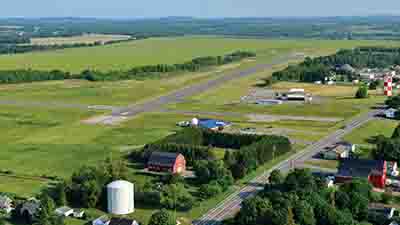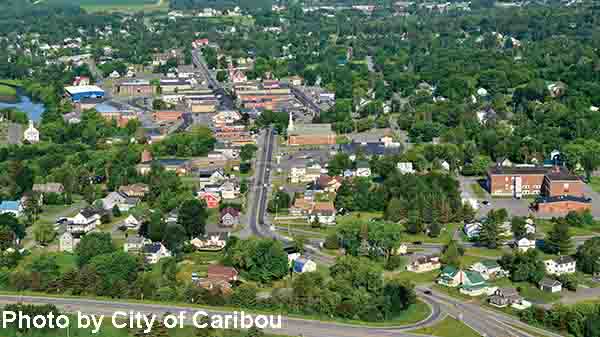
Maine: Land of Opportunity
24 Mar, 2016
Maine is making impressive changes and using incentives to lure new business.
By David Hodes
In his 2015 State of the State speech, Governor LePage, a former mayor of Waterville, pledged to work on a budget and tax plan that would make sure more taxes are paid by tourists. This change would not be a tax shift, he assured Maine citizens, but a tax cut. “My vision is a Maine with no income tax,” he says. “But I’m no magician. It takes time.”
The tax rate has been reduced in recent years from 8.5 percent – one of the highest in the country – to 7.95 percent. The governor’s plan would reduce it to 5.75 percent, or a 40 percent decrease since he took office in 2011.
The plan would reduce the tax burden on families and small businesses by $300 million. “I ask for a constitutional amendment that will direct all growth in revenue to go toward eliminating the income tax—once and for all,” he said in his speech.
He also wants to cut the corporate tax, which he says is “a job killer.”
He promised to reduce energy rates and fix the broken renewable energy policies in the state. “We have affordable natural gas right in our backyard and hydropower just over the border in Canada,” he says. “Let’s use it.”
He has stated in recent months that a steady decline in Maine’s unemployment rate indicates that thousands of Mainers are working again, pointing out that more than 8,000 jobs have been created since 2011, including jobs from the economic development initiatives. Companies have also invested nearly $400 million in capital investment.
He says that his budget “is not a band-aid to get us through the next budget cycle” but that “it drives prosperity for decades to come.
“It looks past the next election and focuses on future generations,” Governor LePage says.
Industries and Innovations
Maine has targeted seven technology sectors, including mature industries, like forestry and agriculture, as well as emerging ones, such as composite materials and biotechnology, for investment and other types of support. Forestry businesses in the state include Sdr Logging Inc. in Sebec and Mid Maine Forestry in Warren, among others.
- Targeted technologies:
- Biotechnology
- Composites and Advanced Materials
- Environmental Technologies
- Forest Products and Agriculture
- Information Technology
- Marine Technology and Aquaculture
- Precision Manufacturing
Agribusinesses in the state include blueberry growing and processing (Alexander’s Wild Maine Blueberries in Greenfield; Steep Hill Farm in Fayette; Blueberry Hill Farm in Acton, among others), fruit orchards (Apple Acres Farm in South Hiram; Elwell Organic Fruit Orchards in Monroe; Rollins Orchard in Garland, among others) and dairy farms (Taylor Dairy Farm in Hartland; Houlton Farms in Houlton; Hardy Farm in Farmington, among others).
But there are still vestiges of Maine’s past working today. There are 1,400 manufacturing companies in the state employing more than 534,000, according to the Manufacturers Association of Maine. Some familiar names include Texas Instruments, Smith and Wesson, L.L. Bean and General Dynamics.
Austin Bleess, the city manager of Caribou, says that while there is some manufacturing still in the upper northeast part of the state where Caribou is located, economic developers there are looking at growing the creative economy. “We have great fiber through the heart of the community and within a mile of the majority of our homes in the urban area,” he says. “That could really help fuel our creative economy.”
Aviation also has a foothold in the state. In January, Minneapolis-based MVP Aero announced that is has chosen Brunswick Landing as the site for building its new amphibious aircraft, a light sport aircraft that can be landed on water and then can fold its wings to fit into marinas and boathouses.
There are now 80 businesses at 3,200-acre Landing, a former naval base, including a dozen at the technology accelerator TechPlace in Brunswick. The Midcoast Regional Redevelopment Authority (MRRA) established TechPlace as a science and technology business incubator to prompt new small business development and job creation to replace the 4,800 jobs lost as result of the base closure. The incubator will support the business clusters of aerospace/aviation, composites/advanced materials, biotech/biomed, renewable energy and information services technologies. This project was initiated by a matching federal grant of $1.5 million.
While the state reorganizes its economic priorities, there is still steady economic activity underway. Bleess says that they are working on a big project now, centered on railcar manufacturing. “That would be a project that would be huge for the area,” he says.
There are also opportunities in the northeast area of the state for mining and forestry, especially in the Bald Mountain area, an area said to contain copper, zinc, silver and gold by the U.S. Geological Survey. “All of those things would really help our area,” Bleess says. “It’s the land of opportunity here.”
Talent and Education
There are eight universities in the University of Maine higher educational system, in addition to the Maine Maritime Academy, and eight community colleges in the community college system—not to mention some top-notch private schools like Bowdoin, Colby and Bates that attract talent from across the country.
The Maritime Academy in Castine offers hands-on instruction aboard commercial training vessels giving students practical knowledge of engineering, management, science, and transportation.
The Maine Technology Institute (MTI) is an industry-led, publicly funded, nonprofit corporation that offers early-stage capital and commercialization assistance in the form of competitive grants, loans and equity investment for the research, development and application of technologies that create new products, processes and services, generating high-quality jobs across Maine.
In early 2003, the University of Maine Advanced Engineered Wood Composites Center (AEWC) sought to improve collaborative activity and applied for and received an MTI Cluster Enhancement Award. The award of $245,000 was matched by more than $441,000 from AEWC’s testing and research contracts.
The project plan called for addressing the lack of composites research and development in Maine by substantially increasing the cluster’s collaboration and communication on composites development projects.
To create the necessary synergy, AEWC sought to combine the manufacturing experience of the boatbuilding sub cluster, the high-tech innovation of the non-boatbuilding sub cluster, and its own laboratory and pilot manufacturing plant with its access to public funding.
In January 2010, AEWC received $12.4 million of federal funds.
But there’s more access to other institutions nearby, according to Bleess. He says that any resident is a quick plane ride from the Caribou Municipal Airport to large universities in and around Boston, including the Massachusetts Institute of Technology and Harvard.
Assets
There are three commercial deep water ports and an intermodal rail facility with free trade zones in Maine, including the Port of Portland serving the petroleum industry; Searsport, with an intermodal truck-to-rail facility; and Eastport, with docking facilities for large cruise ships.
In Caribou, Bleess says that right now the city owns a 25,000-square-foot manufacturing building that they are trying to rent out, which was the former home to a computer chip manufacturer making controls for headlights and windshield wipers. “We are working hard to get tenants in there,” he says. “It’s set up for manufacturing, so it’s workable right now, or it could be renovated to meet the needs of something else as well.”
Bleess says that they also have land available for development; companies can build to spec. “We have an industrial park with two empty lots on the edge of the community that would be great for industrial, with rail access and more,” he says. That is the 440-acre Skyway Industrial Park, with over 150 acres of developable sites. It sits adjacent to the Northern Maine Regional Airport.
Bleess says that they further have industrial space in the old Loring Air Force Base, now called the Loring Commerce Center in Aroostook County, featuring 3,800 acres of developed land to support new businesses. “There is a two-mile runway there, with a huge arch hangar that will support anything and everything in the aviation industry,”
Lifestyle
Maine is abundant with scenic lakes, mountains and coastline, along with destinations like Acadia National Park, seaside towns, and recreation areas for skiing, snowboarding, and snowmobiling. It also offers cultural communities boasting museums, performing arts and more.
The natural resources are formidable in the area, Bleess says. “Snowmobiling is the biggest outdoor event we have here,” he says, adding that they have some of the best snowmobiling trails in New England. “We take pride in that fact,” he says. “We get people from all over Canada and New England to come here for snowmobiling.”
For complete details on conducting business in Maine, visit:
Side Note
Down to Business
– Maine has competitive labor costs six percent less than the national per capita rate and the lowest in New England.
– Maine has state-funded workforce training programs and Community Development Block Grant programs for infrastructure development.
– Maine had 22.7 percent clean energy/green job growth from 1998 to 2007 compared to the national average of 9.1 percent.
Outdoors and Recreation
– Bradbury Mountain State Park is an 800-acre state park in Pownal, Cumberland County, and is one of Maine’s original five state parks. There are nine separate trails in this 21-mile park. Mountain bikers make up 25 to 30 percent of the park’s 80,000 year-round visitors. During the spring, the summit of Bradbury is an excellent area to view the annual migration of several species of hawks.
– Caribou is within a 10-minute drive from one of the most impressive wildlife refuge areas – the 7,750-acre Aroostook Wildlife Refuge on part of the former Loring Air Force Base. Also nearby is the 65-mile-long Allagash River, one of the premier canoeing waterways on the East Coast, Bleess says.
Related Posts
-

Business Starts Here
-

TEXAS ENTERS 2021 AS WORLD’S 9TH LARGEST ECONOMY BY GDP
-

CALIFORNIA: 5TH LARGEST ECONOMY IN THE WORLD
-

MINNESOTA: FIRST IN FIVE-YEAR BUSINESS SURVIVAL RATE
-

CANADA: Alberta. More Open Than Ever
-
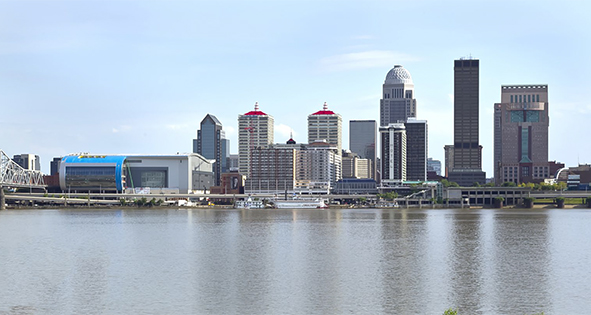
KENTUCKY: The Bluegrass State Is The Right Place To Grow Your Business
-

TENNESSEE: Great Brands Deserve the Great State of Tennessee
-
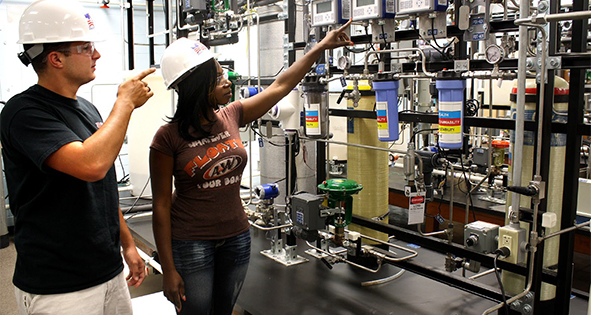
LOUISIANA: Custom Workforce for Expanding
-
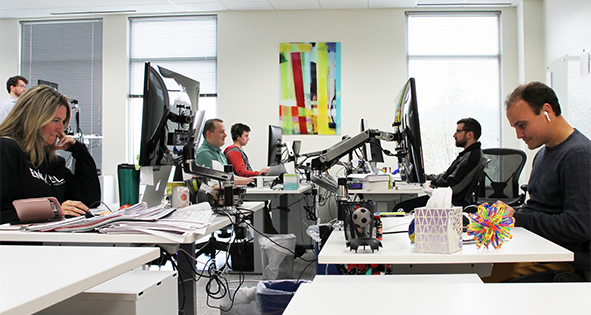
MARYLAND: Home of Innovators
-
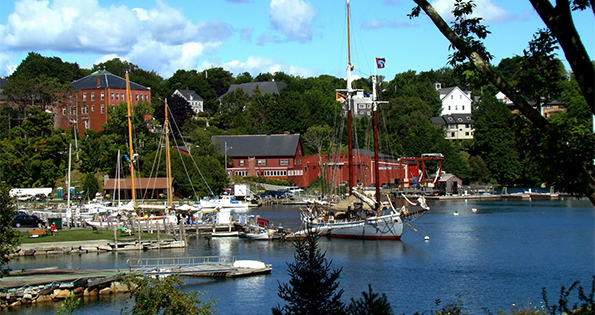
MAINE: Yankee Ingenuity


